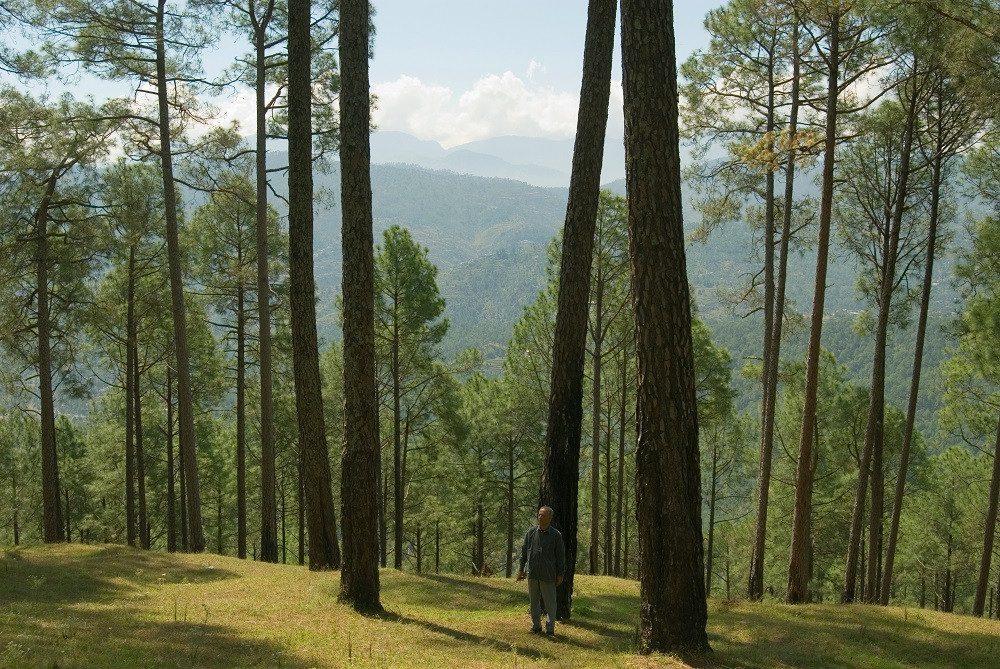Forests can simply be understood as complex ecosystems which is critical for maintaining healthy and habitable biosphere. Similarly, Water is another such critical component of the biosphere that is essential for the survival of all life forms. Traditionally, we understand that where there is forest, there is water. But in recent times, research has shown that this traditional understanding of interaction between forest and water is influenced by long-standing beliefs regarding the role of forest in water cycle and it is not always supported by science.
Various researchers have tried to explain the interaction between forest and water through years of empirical studies and they have come up with the following conclusions:
- In a river basin, forest cover reduces the annual run-off compared to shorter vegetation. Dry season flow is likely to be reduced in forest catchments as tree roots extract water from deeper layers of soil.
- Sometimes forest facilitates ground water recharge which temporarily allows for even distribution of run-off thus increasing dry season flow (but reduced annual flow). However, most evidence suggest reduction in dry season flow after afforestation.
- Only in specific areas in the mountains, annual yields of water may increase because the forests intercept fog and cloud droplets.
This shows that availability of forest does not always support availability of water. Similar results were shown by a research in Nepal few years ago, which showed that pine forest has been one of the reasons for depleting natural streams and aquifers in the mid-hills of Nepal.
The forest area of Nepal is largely managed under the five forest management regimes as defined by the forest Act, 2076. Among these management regimes, community forestry is the most adopted forestry practice and today community forests occupy 28.8% of the total forest area of Nepal (Pathak et al., 2017). In the 80s, the government of Nepal started a country-wide reforestation initiative to recover Nepal’s mid-hills from wide spread deforestation that occurred a decade earlier. After years of research done by the Nepal Australia Forestry Project, pine was chosen as the ideal species for reforestation because it was already native in the mid-hills and grows very fast. As a result, majority of the trees in community forests of Nepal are pine today. But few years ago, a research in Dhulikhel showed that on an average pine consumes 13.5 liters of water per day and larger trees consume up to 70-80 liters of water per day. Also, they are coniferous evergreen species which means they require water throughout the year. This has caused reports of depletion of natural water sources from several districts of Nepal.
But the truth is there is not enough evidence to justify that pine is sole cause of depletion of water sources in the mid-hills of Nepal. Experts claim that because pine has very low utility in terms of fodder and fuelwood, it is less preferred by the local community that wants to replace it with species that are more suitable to their agricultural and household needs. Hence they report depletion of water sources due to pine trees. Also, there are natural pine forests in Nepal where water sources are flowing in a healthy manner. So, presence of pine does not necessarily cause depletion of water sources.
Perhaps, there are a number of other factors that may be playing a role in depleting the water sources in Nepal. Firstly, the management practices that are being adopted for managing forests are not focused toward maintaining ecological integrity of forest ecosystems. The scientific forest management system which is solely focused toward promoting growth and regeneration of timber species are being adopted in high altitude districts like Humla, Baitadi and Parbat, which will only degrade the ecosystem integrity further. This surely has a certain degree of impact on the availability of water in the natural springs. Another factor that is at play here is climate change. With disruption in weather patterns, erratic rainfalls have become common around the world. Some places experience concentrated rainfalls, whereas some places experience droughts. This may have also caused depletion of water in the natural streams and aquifers.
All we can say for now is that more research needs to be done to understand the dynamics of relationship between forest and water. Government institutions like Forest Research and Training Center (FRTC) and other non-governmental institutions working in the field of forestry need to collaborate in long-term research projects to ascertain whether the depletion of water resources is being caused by pine or not. If pine is really causing depletion of water resources, they can be replaced with species such as chilaune or katus or others that are suitable to the local factors. Also, proper policies need to be designed and adopted at the provincial level to integrate forest and watershed management for sustainable utilization of Nepal’s natural resources. The ways to rejuvenate these natural springs and aquifers also need to be explored to maintain long-term availability of water in our rivers.
(The author is a BSc Forestry graduate from Institute of Forestry, Pokhara)

